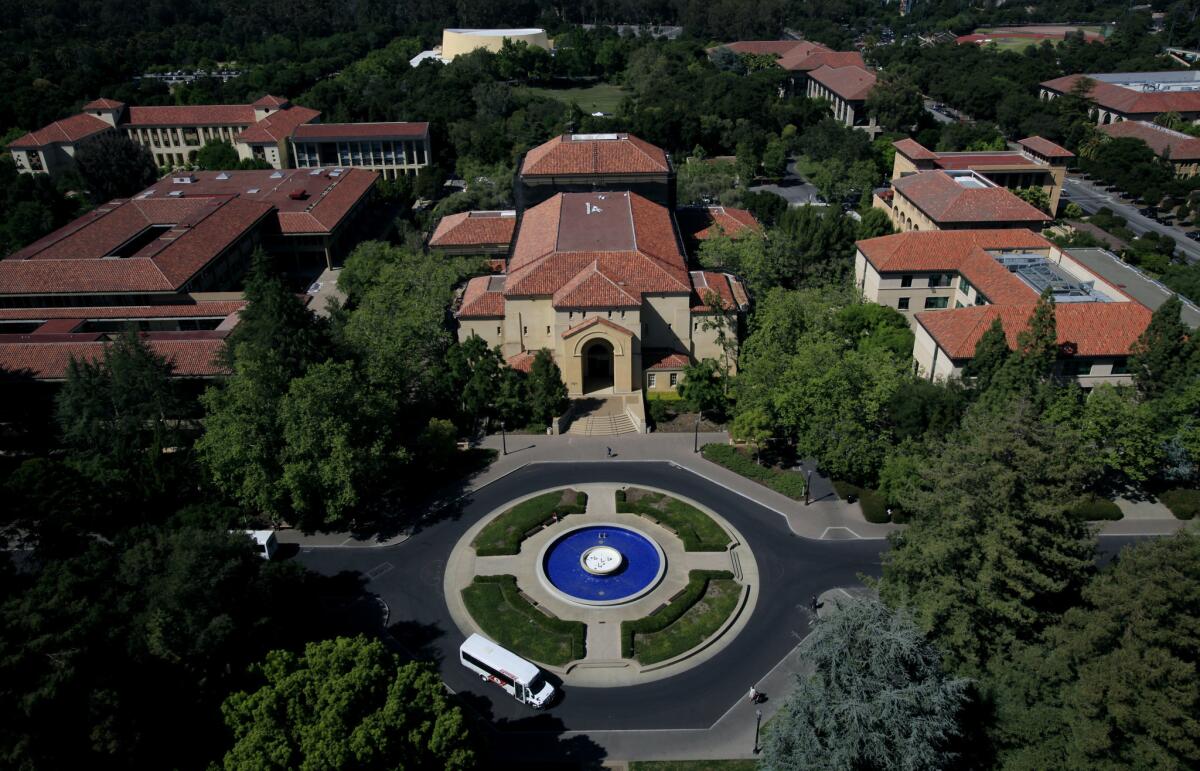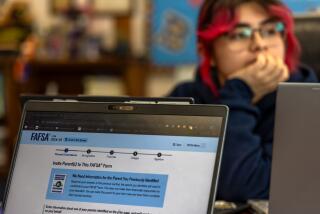Colleges to offer new joint application website

Stanford University is among 83 colleges starting a new joint application portal.
Starting next year, high school students will have a new online alternative to the much-used and sometimes criticized Common Application if they seek admission to a group of colleges with high graduation rates and healthy financial aid, officials announced Monday.
Eighty-three colleges and universities — including Ivy League campuses, Stanford, Caltech and prestigious public institutions outside California — have formed a coalition to create a joint application portal that they said would make the process more engaging and less intimidating.
One of the portal’s goals is to attract more low-income and underrepresented students.
The new website is also clearly meant to be an alternative to the Common Application, the online college application that is used by more than 600 schools and dominates the field. Most colleges in the new coalition will continue to belong to the Common Application and allow applicants to use it.
Technical problems with the Common Application two years ago panicked students and caused some colleges to delay early decision application deadlines. Officials say the issues have been solved.
The joint application website from the Coalition for Access, Affordability and Success will be available for students to explore and to use in planning for college in January 2016. Many participating schools will start accepting applications via the new portal in summer 2016.
Students will be able to upload writings, videos, artwork and other projects throughout their high school years, creating an inventory to use in their applications, officials said.
To join, colleges must show that at least 70% of students graduate within six years. Private colleges must pledge to meet the demonstrated financial need of all U.S. students; public schools must have affordable tuition for in-state students and solid financial aid.
The group so far includes such Ivy League institutions as Harvard, Princeton, Yale and Brown; other elite participating schools include the University of Chicago, Caltech, Pomona, Duke, Tufts and Reed; and among public institutions are the University of Michigan, University of Washington and Ohio State.
The UC system runs its own shared application for its nine undergraduate campuses and has not joined the Common Application or the new coalition. UC spokeswoman Dianne Klein said that early talks with the coalition got hung up on how to accommodate transfer students and whether all UC campuses would be included.
Progress has been made on those issues but there was not enough time for more meetings, she said. “So we haven’t ruled out joining this effort,” Klein added.
Richard Shaw, Stanford University’s dean of undergraduate admission and financial aid, said the Common Application’s technical glitches two years ago were a factor in establishing an alternative. But just as important is the plan for a different format allowing students as young as high school freshmen to explore colleges and get accustomed to the application process, he said.
He hopes it will attract students who initially think their options are very limited and help them “look beyond what they know.”
Seth Allen, Pomona College’s vice president and dean of admissions and financial aid, said the new joint site would be particularly important in high schools where counselors have huge numbers of students and can’t give much individual attention.
“This is going to be quite helpful so students at an early age can start to understand what these colleges are looking for,” he said.
College officials emphasized that admissions criteria would not change with the new portal.
Although access to the new website will be free, colleges still will charge application fees, with waivers for low-income students.
Aba Blankson, spokeswoman for the nonprofit Common Application, said her organization does not see the coalition as a threat.
“If it increases college access for all, then it is good for everybody,” she said.
She noted that the Common Application was used by 860,000 students last year to submit more than 3.7 million applications and includes a wider selection of schools.
“We find the breadth and diversity of members help students. Lots of very bright and talented students may not be admitted to the most highly selective colleges,” she said.
Follow me @larrygordonlat.
More to Read
Sign up for Essential California
The most important California stories and recommendations in your inbox every morning.
You may occasionally receive promotional content from the Los Angeles Times.











